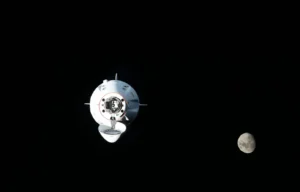
SpaceX is set to co-own valuable data, biological samples, and potentially patents and intellectual property associated with human spaceflight through a new program for research on crewed Dragon missions. The company is actively seeking proposals for innovative science and research ideas focused on enhancing life in space and on other planets. Specifically, SpaceX is interested in studies and experiments related to fitness, solutions for increased efficiency, and human health during extended space missions.
The selected research groups will have the unique opportunity to conduct experiments on SpaceX’s crewed Dragon missions, transforming the spacecraft into an orbital lab. This initiative, discussed by SpaceX over the past decade, has now become viable as a business case.
According to the collaboration terms, SpaceX and the research entity will jointly own the rights to all data and samples acquired during the research on orbit, whether collected by SpaceX or the research institution. The agreement extends to jointly owning technology, broadly defined to include software, inventions, and proprietary information.
The terms further state that each party can independently license or commercialize the jointly owned technology without accounting to the other party, providing flexibility for both SpaceX and the research institution. However, there are exceptions, with any technology developed solely using the researchers’ equipment owned exclusively by the researchers. Even in such cases, the data and samples would remain jointly owned.
Legal experts, including Steven Wood, a space law attorney, note that these terms are standard for patents and inventions in this context. The agreement underscores that SpaceX stands to gain more than just revenue from commercializing Dragon, as it opens avenues for joint ownership of valuable data and intellectual property.
“Expanding the borders of consciousness”

Elon Musk, CEO of SpaceX, has consistently emphasized the company’s primary objective: facilitating human life on multiple planets, starting with Mars. Significant progress has been made toward this ambitious goal, notably with the development of the Starship rocket, designed for deep space travel. SpaceX has conducted two orbital flight tests of the Starship and is gearing up for a third test later this month.
However, reaching Mars is only part of the challenge. NASA highlighted this aspect recently, underscoring the substantial physical and psychological risks that astronauts will encounter on their journey to the Red Planet. In a white paper released last week, NASA outlined the perils of interplanetary travel, including exposure to high levels of radiation, physiological effects due to varying gravity environments, and the extended exposure to isolation and confined spaces. Addressing these challenges is crucial for the success of SpaceX’s mission and the well-being of future Mars-bound astronauts.















































